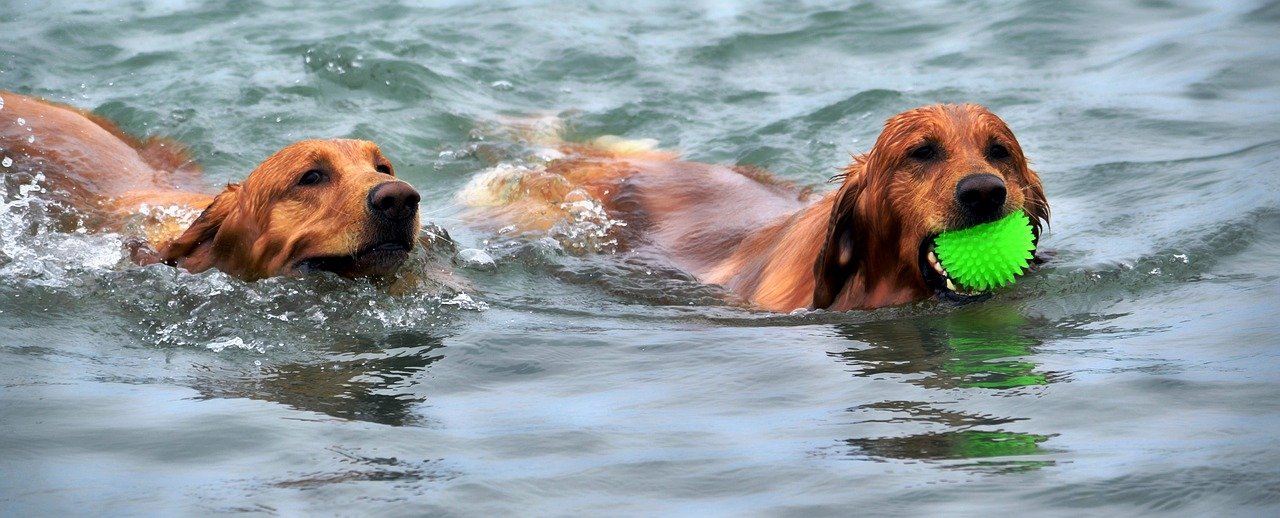Swimming is an excellent method for you and your dog to get some exercise. It is beneficial to one’s general health because it provides an aerobic workout while also toning and strengthening muscles. It’s especially effective as a treatment for dogs recovering from an injury or surgery, those with joint issues, or those that are older or overweight.
How Long Should Dog Swim For A Good Workout?
If your dog is a beginner at swimming, he should swim for 10 minutes. Each visit to the water improves his stamina. If a dog is a confident swimmer, he can swim for 30 minutes for a good workout. The amount of time a dog spends swimming depends on its personality, age, breed, and physical wellbeing. Because some dogs are more experienced than others, it could take anywhere from 5 to 60 minutes.
Swimming Benefits For Dogs
Boosts Their Health
Swimming is one of your dog’s best and most complete kind of exercise. Swimming for one minute is equivalent to four minutes of running! It has a range of health benefits, including boosting the heart and lungs, reducing inflammation, raising metabolism, and enhancing circulation, all of which contribute to healthy skin and coat. Furthermore, moving their legs against the force of the water engages every major leg muscle, resulting in increased overall tone and stamina. All of this equates to a healthier, happy dog who can play, run, and enjoy himself for longer periods while avoiding injury.
Helps Relieve Stress

Swimming is beneficial not just to your dog’s physical health but also to their mental wellness. To keep bright and happy, dogs, like humans, require mental stimulation in the form of play, enjoyment, and a variety of activities that are different from the norm. Swimming gives dogs who are often constrained to exercise on a leash the opportunity to release all of their pent-up energy without feeling confined. Plus, a tired dog is more likely to anticipate returning home and napping, allowing them to benefit from the restorative properties of a good night’s sleep.
Relieves Pain
Swimming in warm water is an effective type of therapeutic exercise for canines, helping to strengthen joints, improve circulation, and build muscles during the recuperation process. Warm water not only relieves pain but also improves blood flow and helps muscles warm up faster, lowering the chance of additional injury. Many cities have rehabilitation clinics with heated pools for healing pets if you don’t live in a warm area or don’t have access to one.
Best for Overweight Dogs
It can be challenging to provide overweight dogs with appropriate land exercise without overworking their already overworked joints and muscles. Because the water holds much of the canine’s weight, swimming is an excellent way for overweight canines to burn calories and increase their metabolism without causing injuries. Swimming, when combined with a well-balanced diet, can help overweight dogs lose weight and return to a healthier weight.
Is Swimming Bad For Dogs?
Even though swimming is an excellent exercise for dogs, as a responsible dog parent you should know of the bad side of dog swimming.
Drowning
Drowning is the most blatant danger that your dog faces when swimming. Not every dog is a good swimmer. It is strongly advised that you fit your dog with a life vest.
Even the most experienced swimmers might tire out and get into trouble Remove your dog from the water if they look to be struggling and give them time to recuperate. Also do not leave your dog to swim without supervision.
Swallowing Water
You should be careful to prevent your dog from swallowing water while you are swimming because it can lead to water intoxication. If he takes too much water, the brain cells can get swollen increasing the intracranial pressure and brain damage. Water intoxication can lead to death if not well attended
Water in the Ears

Swimming can cause water to enter into a dog’s ears leading to Ear infections. If your pooch is shaking or turning their head a lot, it’s probably because they’ve water in the ears. Clean them with a cotton pad and keep a close eye on them. If this persists and they have a yeasty odor coming from their ears, they are most likely infected. If you’re unsure, talk to your veterinarian. Ear infections can swiftly escalate into a serious problem.
Chlorinated Water
Chlorine and pool chemicals can harm a dog’s skin, fur, and eyes. It’s a good idea to give your dog a nice rinse with fresh water after they’ve been swimming in the pool. Keep him away from the pool for several days if their skin becomes inflamed after swimming. If your skin’s condition does not improve, consult your veterinarian.
Conclusion
There are many factors to consider like age, health, breed, and experience when determining how long your dog should swim for a good workout. There are many advantages of exercising your dog through swimming but do not forget to take precautions. Do not leave your dog to swim unsupervised even if he has experience.


5 thoughts on “How Long Should Dog Swim For A Good Workout?”
Comments are closed.